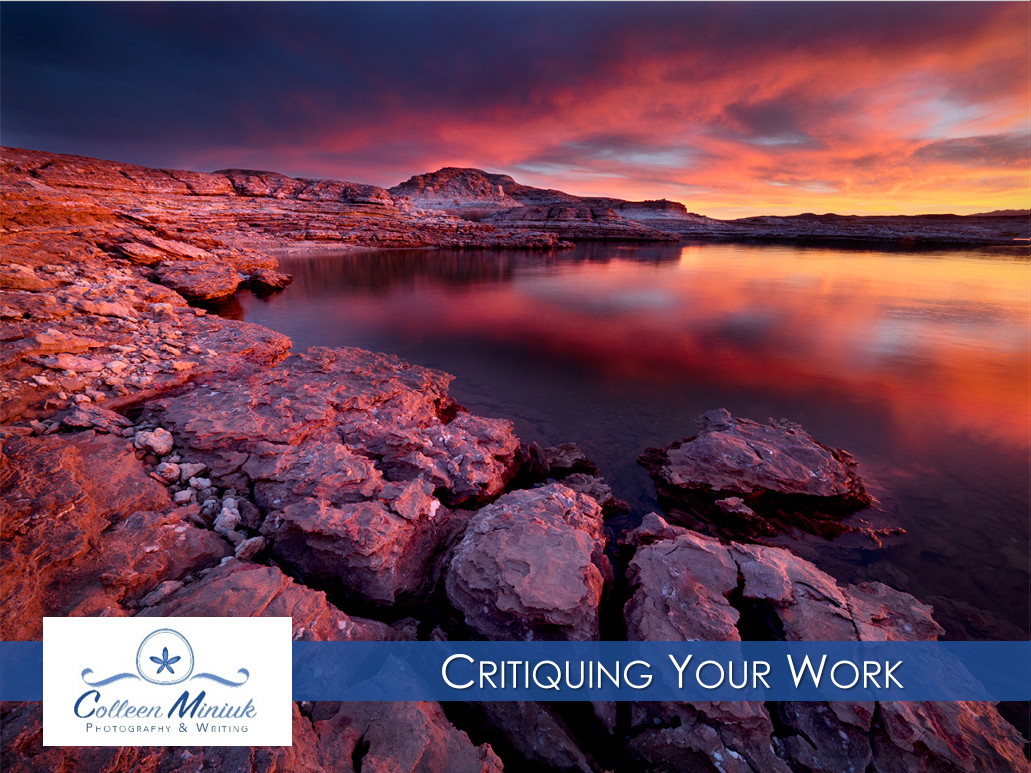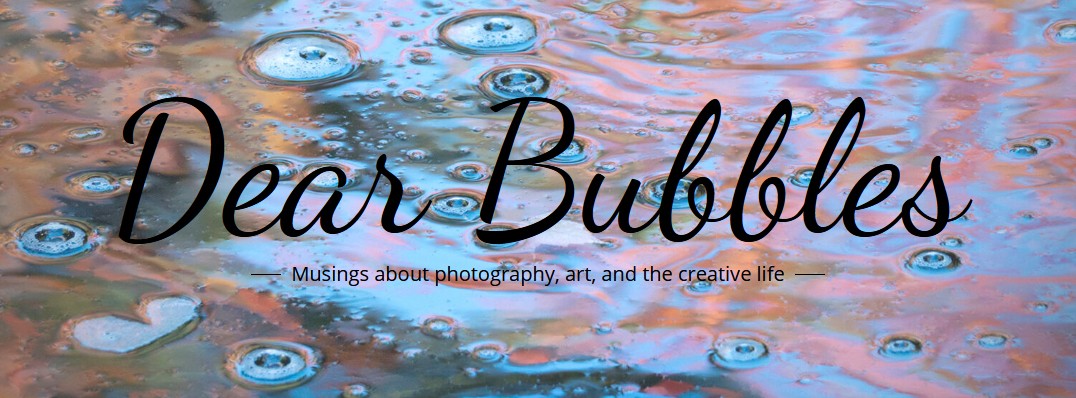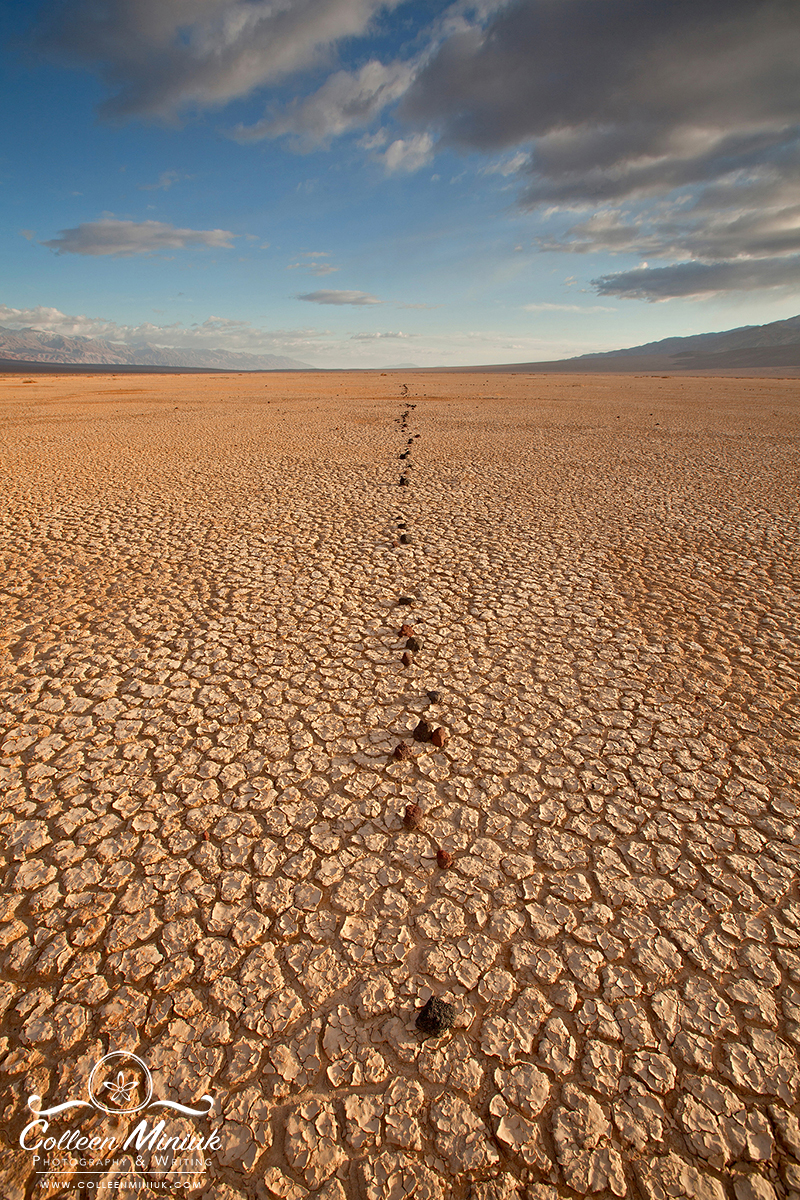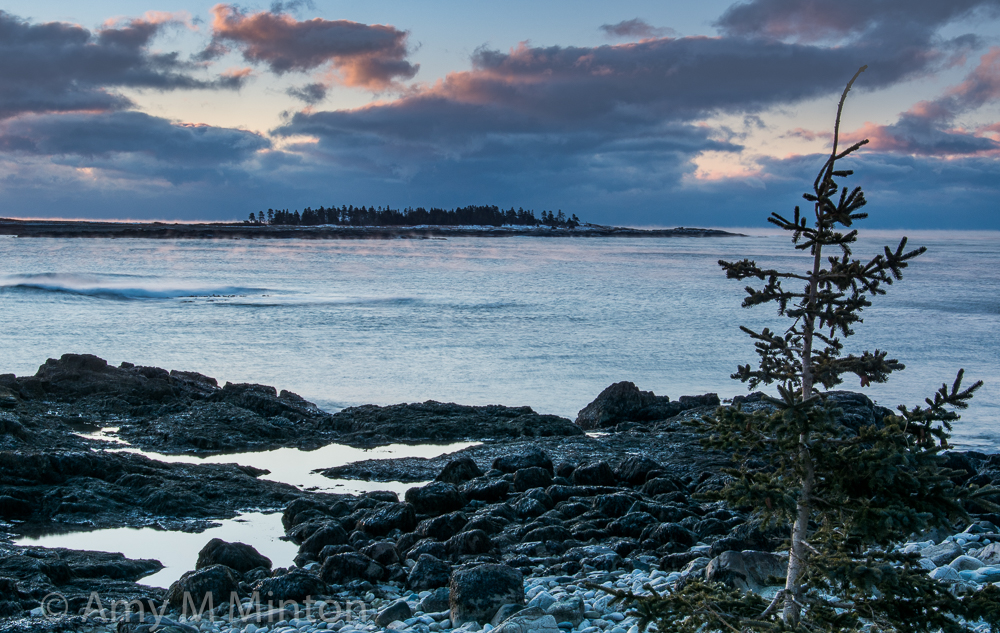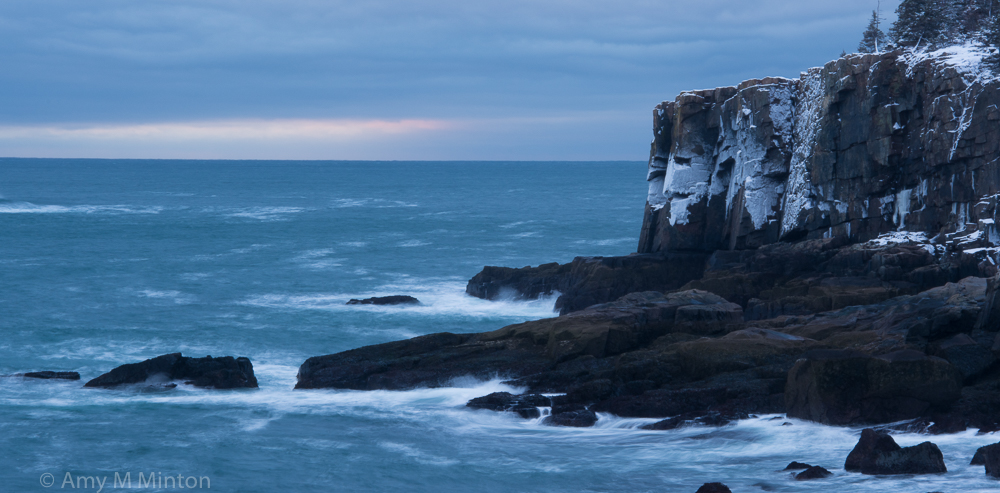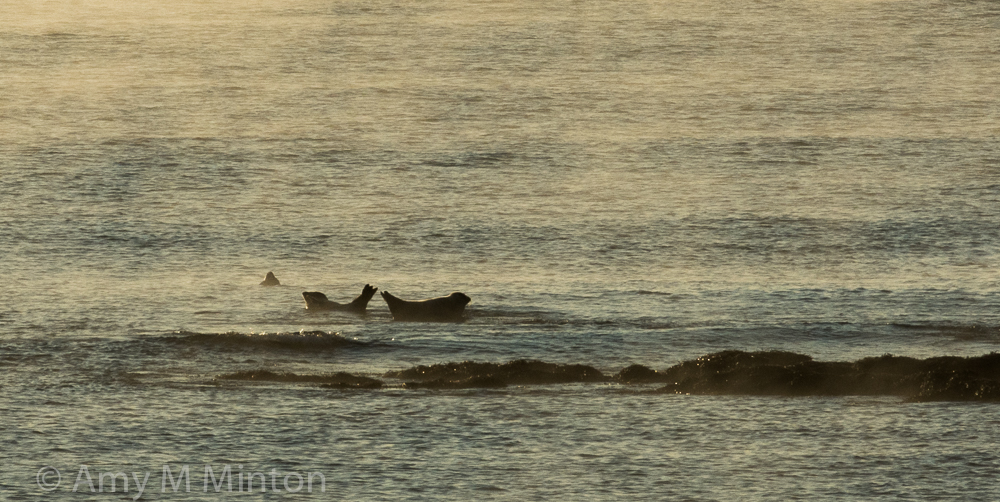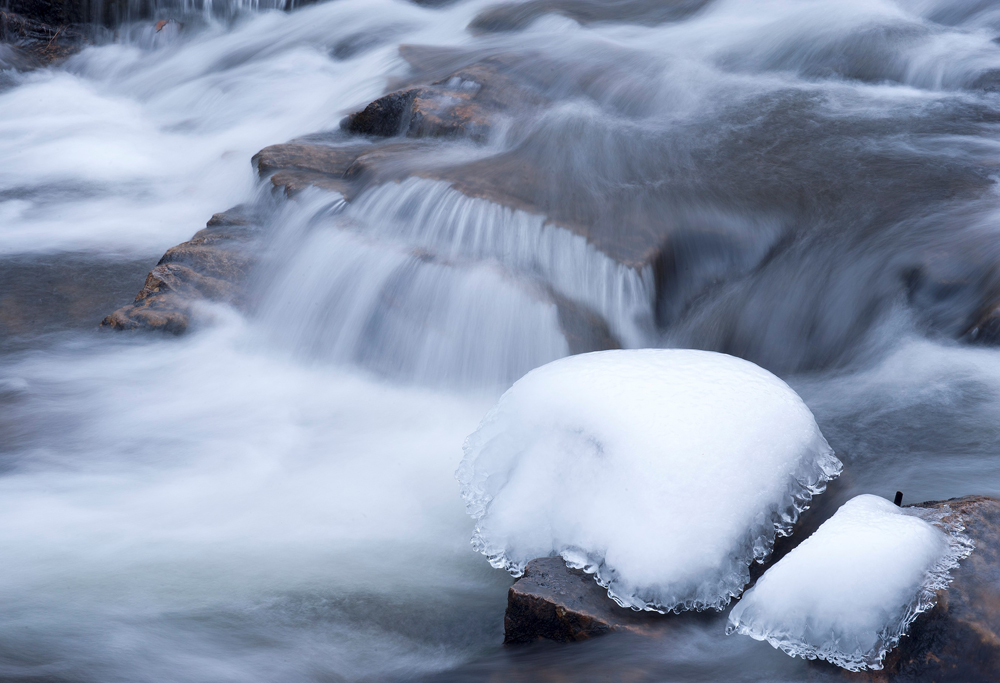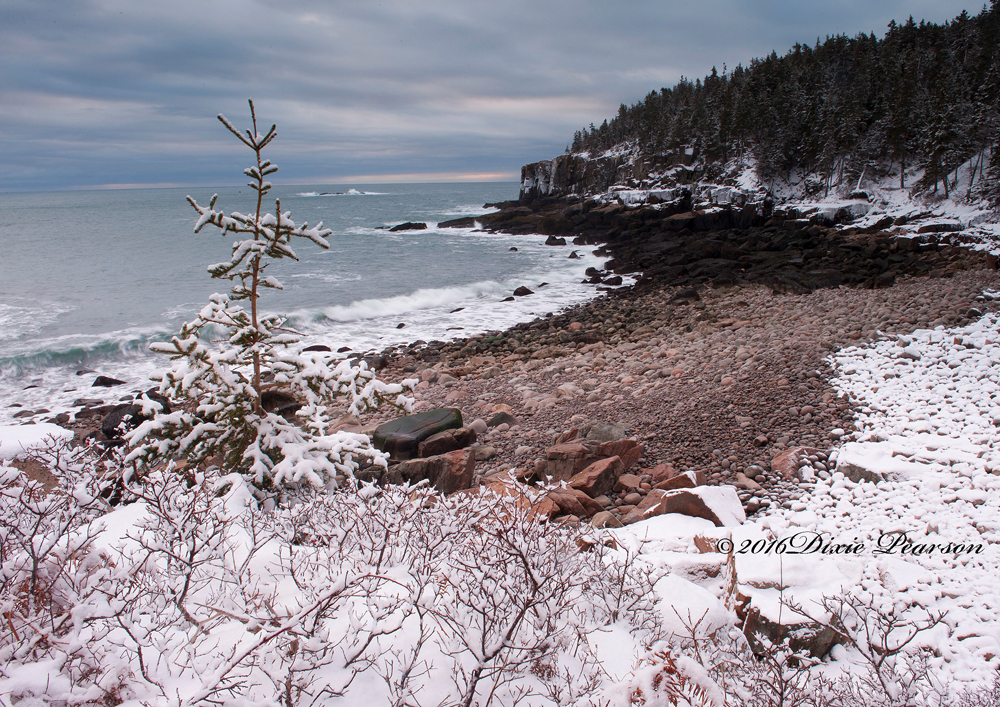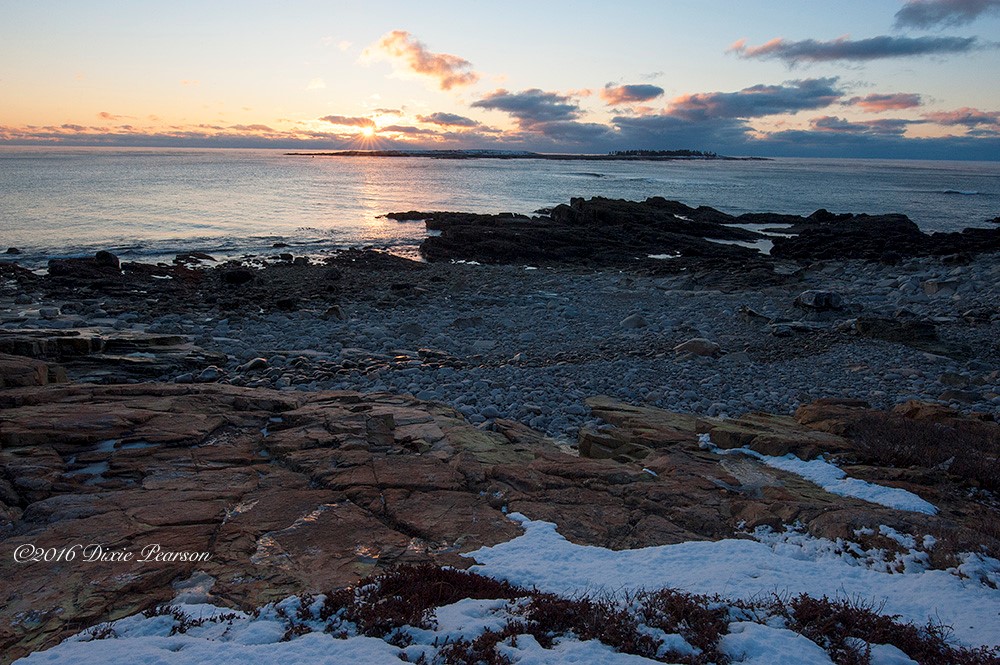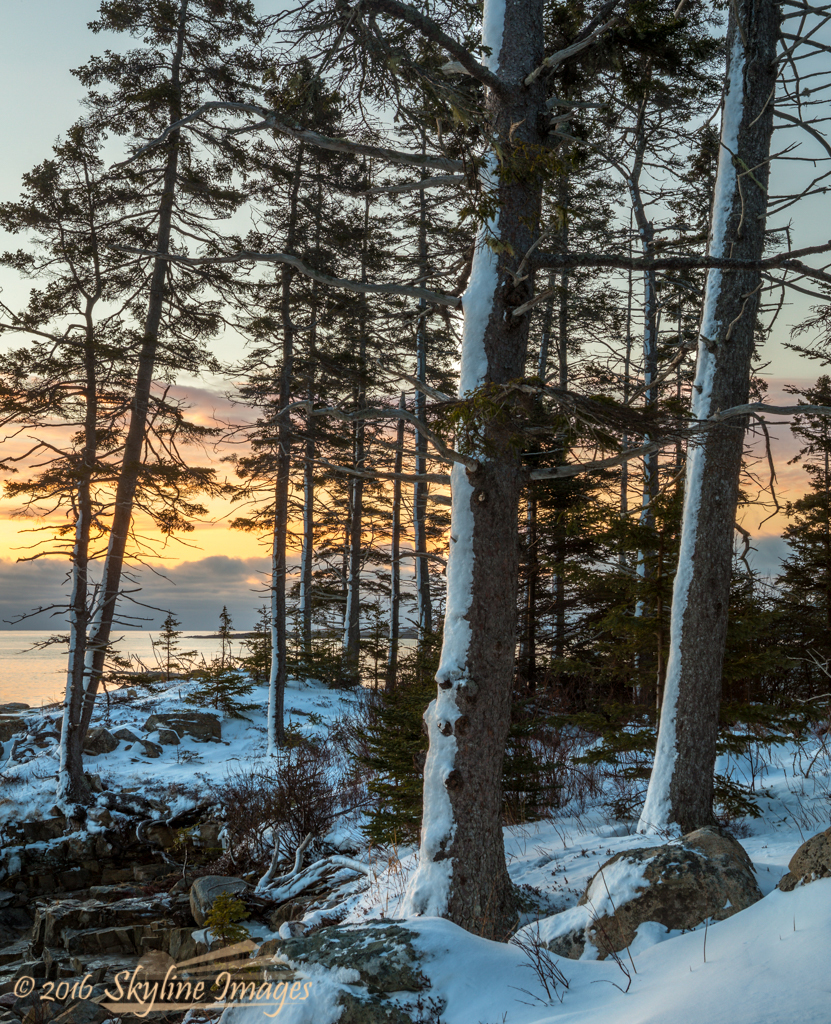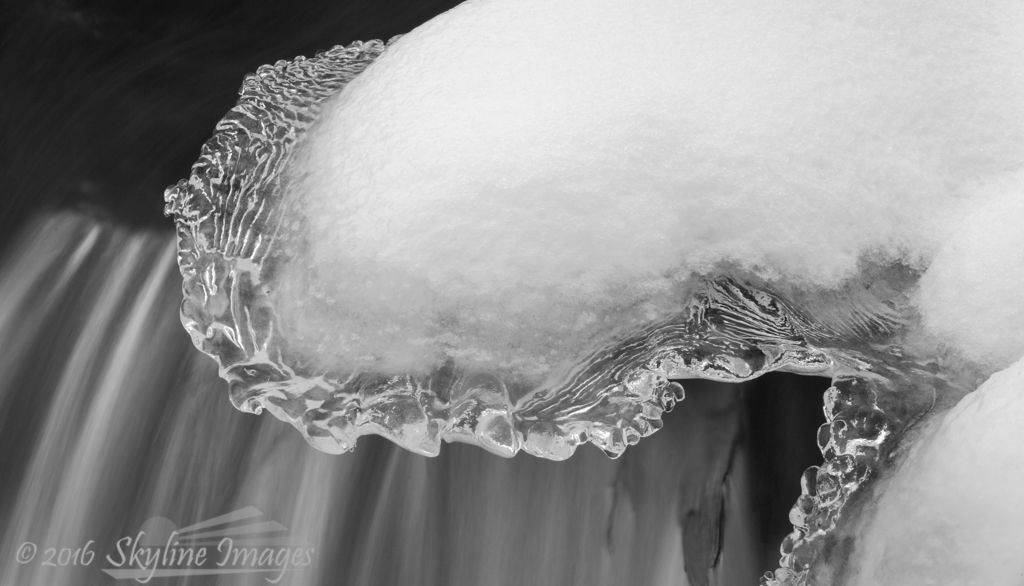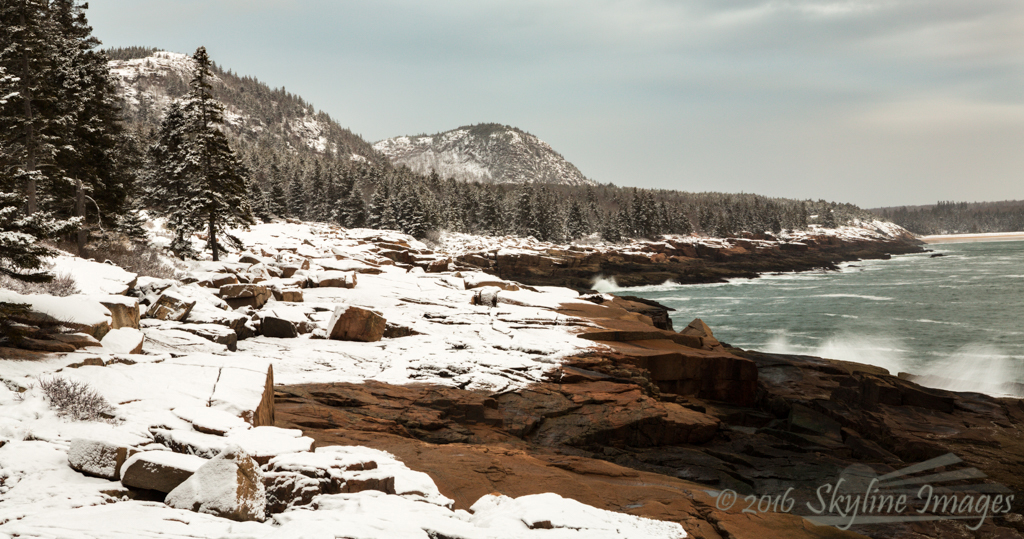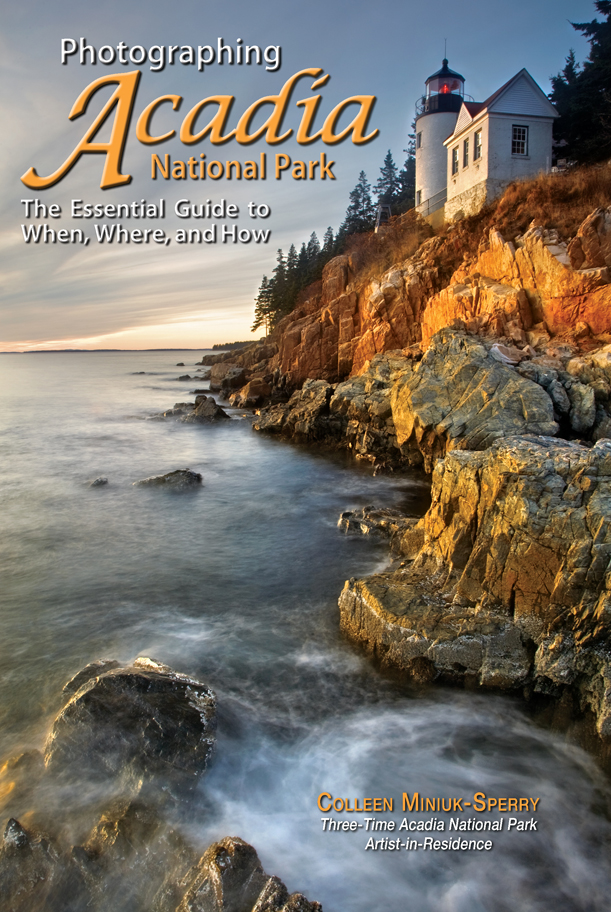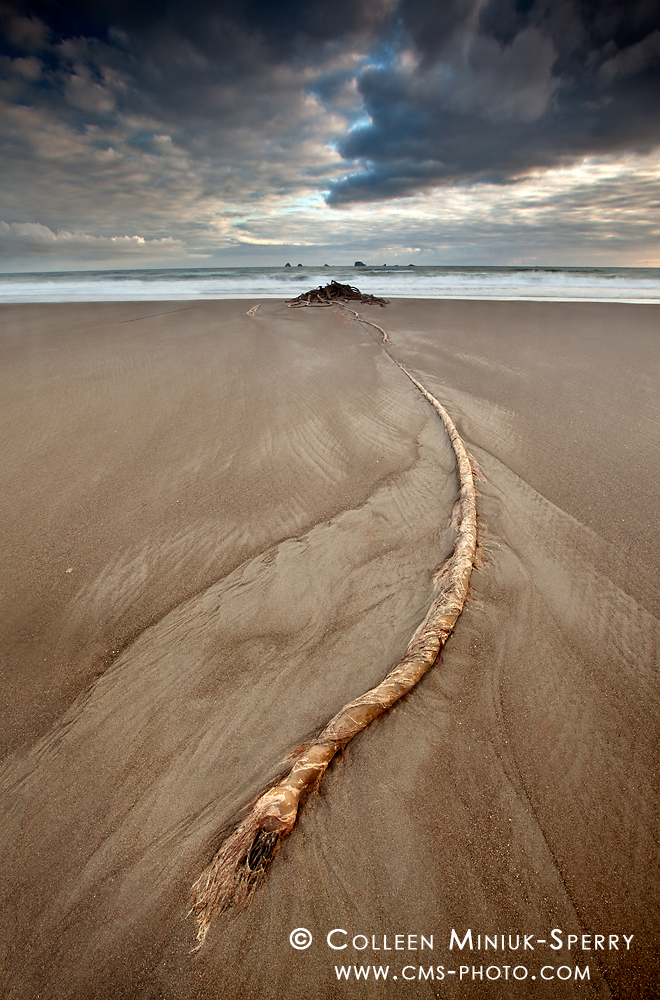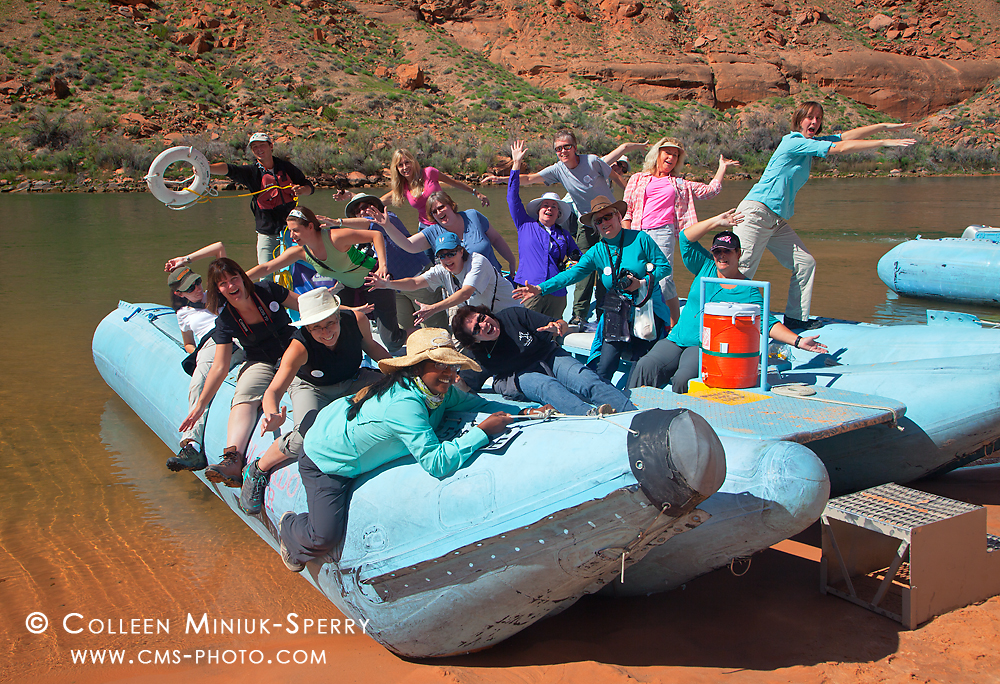
In accordance with tradition on all of my photography workshops, our group poses for a “silly” group photo on the shoreline of the Colorado River in Glen Canyon.
This past weekend, 17 enthusiastic women embarked on a remarkable four-day photographic journey to Page, Arizona on the third Arizona Highways Photography Workshops(AHPW), “Women’s Photography Retreat.” Offered in a different location each year, this year our group marveled not only at classic locations like Horseshoe Bend and Lower Antelope Canyon, but also lesser-known spots like the depths of Glen Canyon on the Colorado River from a jumbo raft and the geological “teepees” of Little Cut.
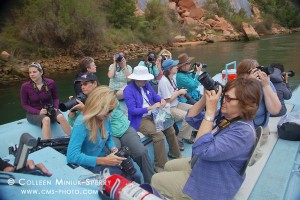
Everyone following their own vision while rafting down the Colorado River in Glen Canyon, Arizona.
During our location visits and classroom sessions, we reviewed photography techniques like conveying time through slowing our shutter speeds, getting closer to our foreground subjects and maximizing our depth-of-field, and taking test shots at high ISO speeds to determine the proper settings for long exposures of the night sky. We also held discussions about we can gain inspiration from learning about the history of women in photography as well as how women photographers may see differently. In between, we swapped “interesting” life stories (some involving things like cats and microwaves…) and loads of belly-aching laughs. But most importantly, this workshop is – and has always been – about empowering women to try new things by pushing the limits of what we think we’re capable of in both photography and life.
Although the entire experience was unforgettable, what will certainly go down as one of my favorite memories of my photography career is our hike and night photography session at the Toadstools hoodoos in Utah. To watch the women light paint, photograph the Milky Way, and then hike back in the dark under the full moon light – all experiences some had never had until this past weekend – was incredibly rewarding.
We set out about an hour and a half before sunset to allow ample time to wander among this geologically rich area. After photographing the hoodoos bathed in direct sunlight at sundown, the group refueled during our picnic dinner before starting our night’s activities.
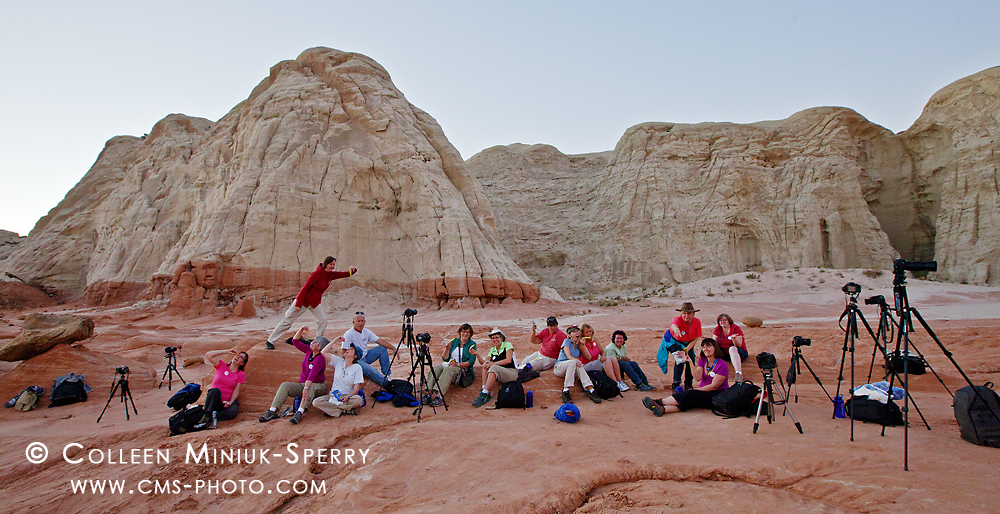
While waiting for the night sky to fall and the moon to rise, we ate a picnic dinner on the rocks. Somehow, this led to a suggestion to “wiggle your pickle.” And if you’re going to wiggle your pickle among a group of photographers, someone is bound to get “THE” shot of everyone wiggling their pickle!
Since many of the ladies had never photographed in the dark or painted with light, we began with a quick introductory session around one of the clusters of hoodoos. In a line, we focused (figuratively and literally) on composing the frame before losing daylight. As the sun fell well below the horizon, the entire group tested their exposure settings starting at ISO 1600, an f/8 aperture, and 30 seconds shutter speed – an arbitrary setting to serve as a starting point for how much light our camera would collect during that time frame. Based on the histogram, we could add or subtract light accordingly to record our vision.
As soon as everyone dialed to the right settings and achieved sharp focus, I counted “1-2-3” and everyone snapped the shutter at the same time. During the exposure, I painted the hoodoos from the left side with about five to seven seconds of light from a strong LED flashlight. After the exposure, we all reviewed our histogram to determine whether our cameras had collected enough ambient light and flash light. Then, we’d repeat.
After a number of snaps, a large, unsightly shadow line revealed itself at the base of the tallest hoodoo. Because the neighboring smaller hoodoo prevented the flash light from hitting the taller hoodoo, the light needed to originate from the front – not the side. Because of the longer exposure, I could solve this minor problem by running into the frame with my flashlight while the group’s shutters were released.
On my first attempt, I painted the hoodoos from the side for a few seconds and then danced into the frame (“Like a gazelle!”), painting the tallest hoodoo at the base to eliminate the shadow. A quick review of the photos indicated the tallest hoodoo had received an excessive amount of light, so we needed to repeat the process with less flash light time.
On the next attempt, one second I was painting the hoodoos as I had down countless times before. The next second, I was chewing on sand. By taking a slight deviation to the right in my path in order to distance myself and my flash from the hoodoos to achieve less light, my right foot dropped into a two-foot deep trench and my entire body fell forward into the higher ground on the opposite side. Not wanting to ruin the entire group’s photo, I yelled, “I’m OK! KEEP SHOOTING!!”
(The hilarity of this statement becomes more evident when you consider the entire group had released their shutter for 30 seconds, making any adjustments to their shot impossible. What were they going to do then? Change their ISO?!)
With the flash light still moving in my right hand, I used my left hand to pick myself up so that I could continue running across the frame to paint the shadow area with light. After the exposure completed and many laughs about my tumble, “Keep shooting!” quickly became our trip’s motto.
And what a fitting rally cry this was not only for this trip and all the AHPW Women’s Photography Retreats, but also for life in general. When something brings you down, hose yourself off, get up, and try again. When something gets in your way, walk around it. When something does not go the way you hoped, try something else. No matter the situation or obstacle, personal growth and success comes when we keep going. Keep trying. And always KEEP SHOOTING!
~Colleen
P.S. If you or someone you know would like to join us on the next AHPW Women’s Photo Retreat in Verde Valley/Sedona in April 2014, visit the AHPW website at ahpw.org/workshops/2014/Sedona-Arizona-Womens-Photo-Retreat-2014-04-25/ for more information and to register. This workshop sells out quickly, so if you’re interested, I’d consider registering as soon as possible to reserve your spot!


